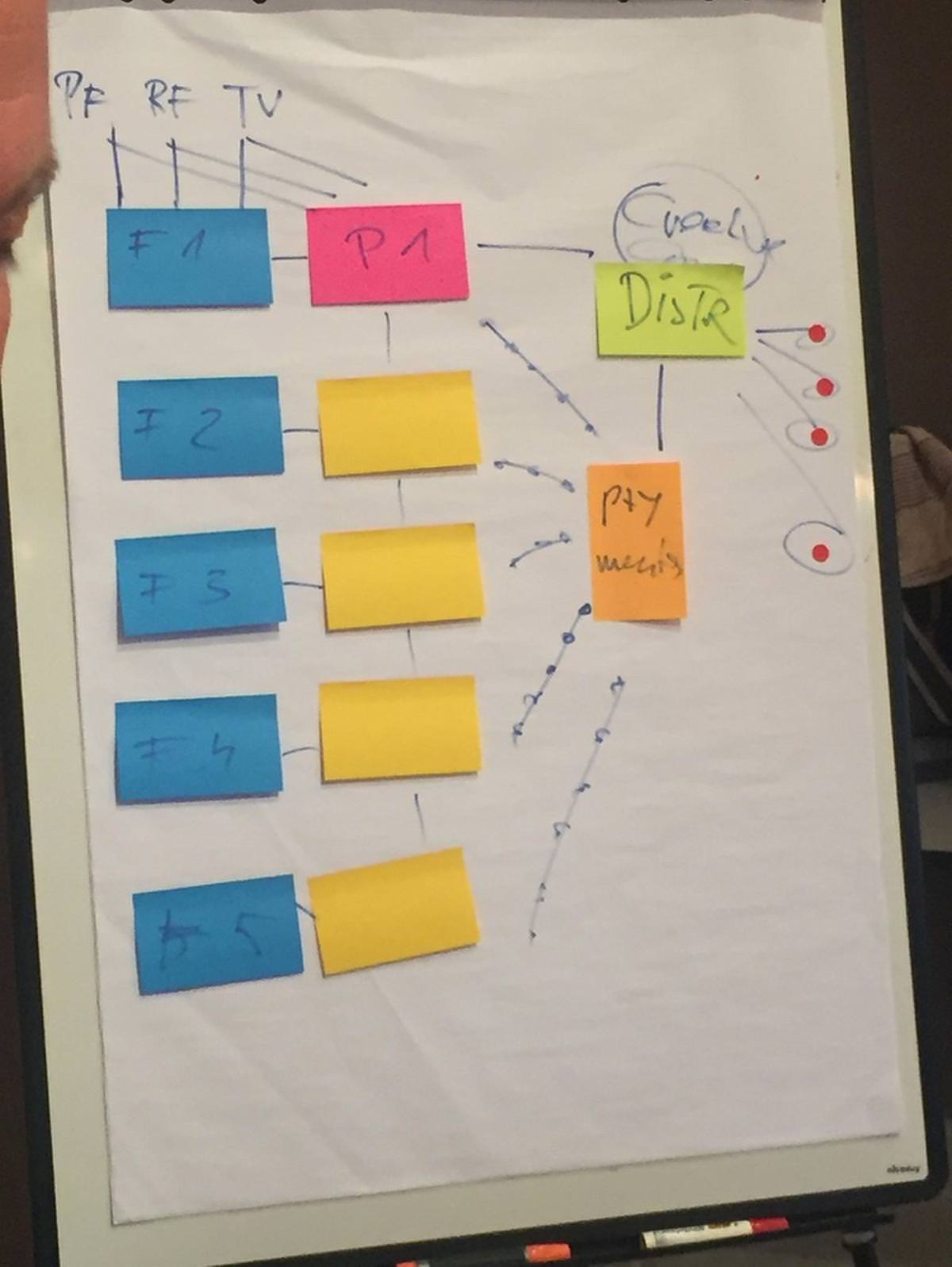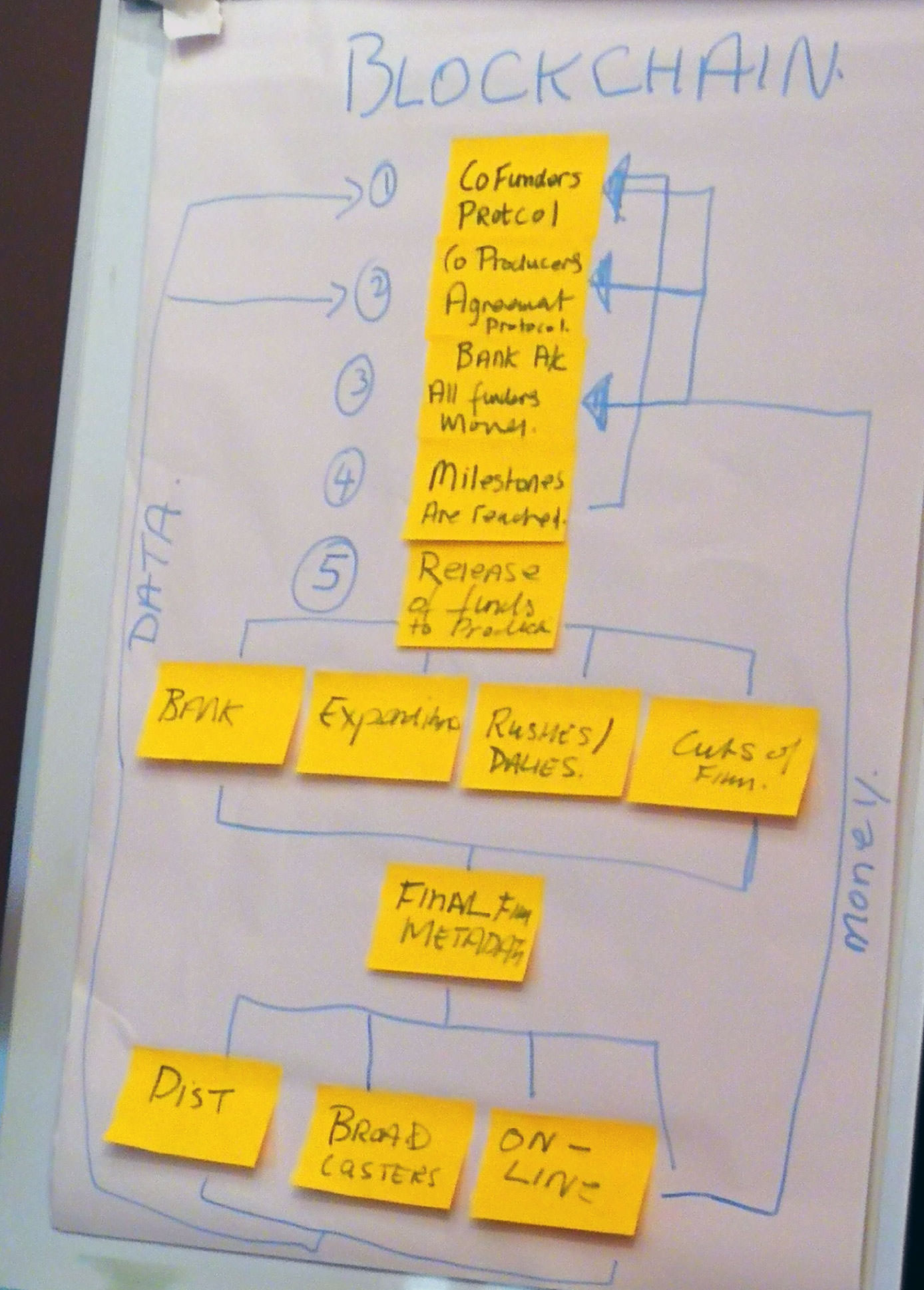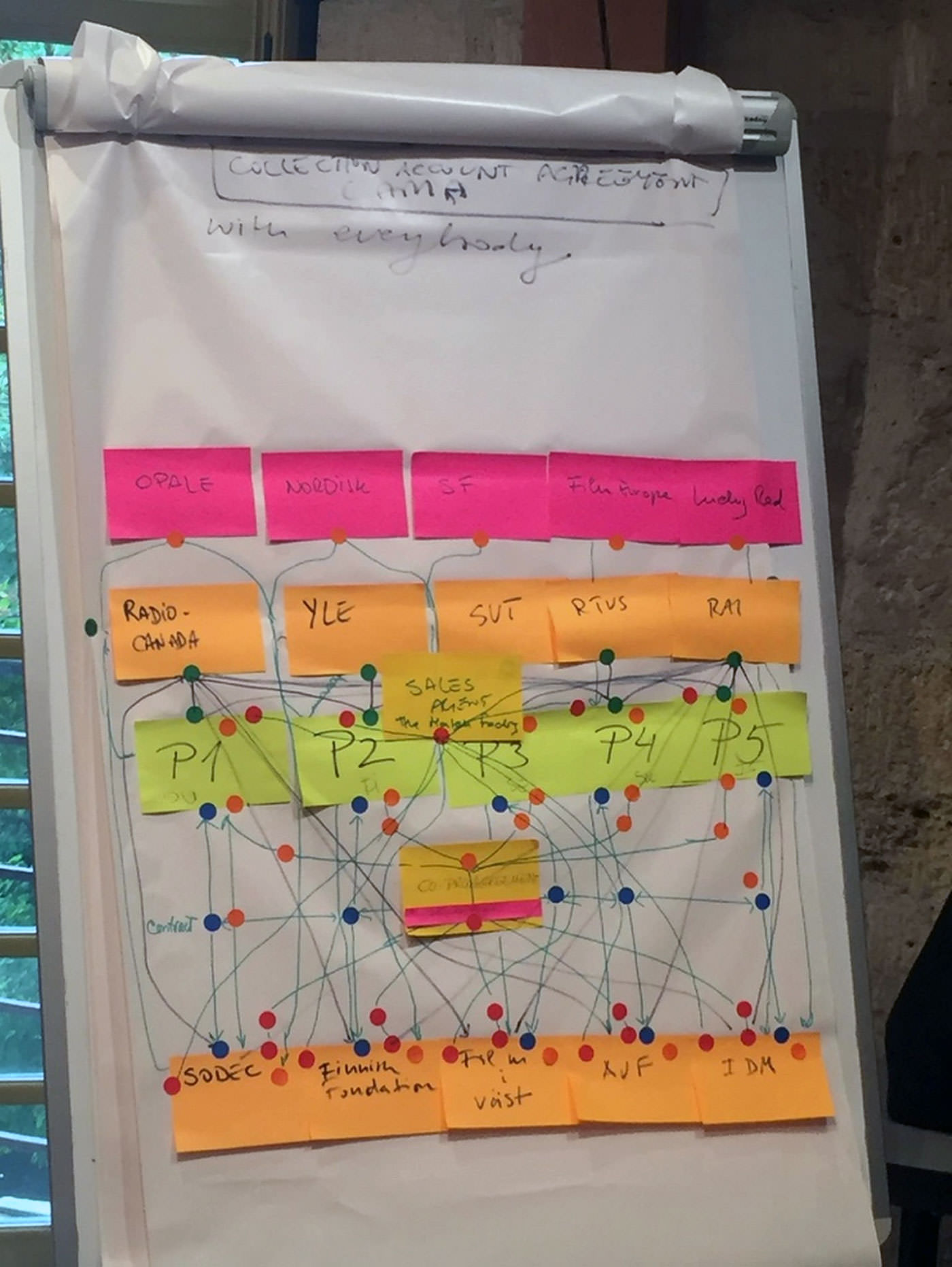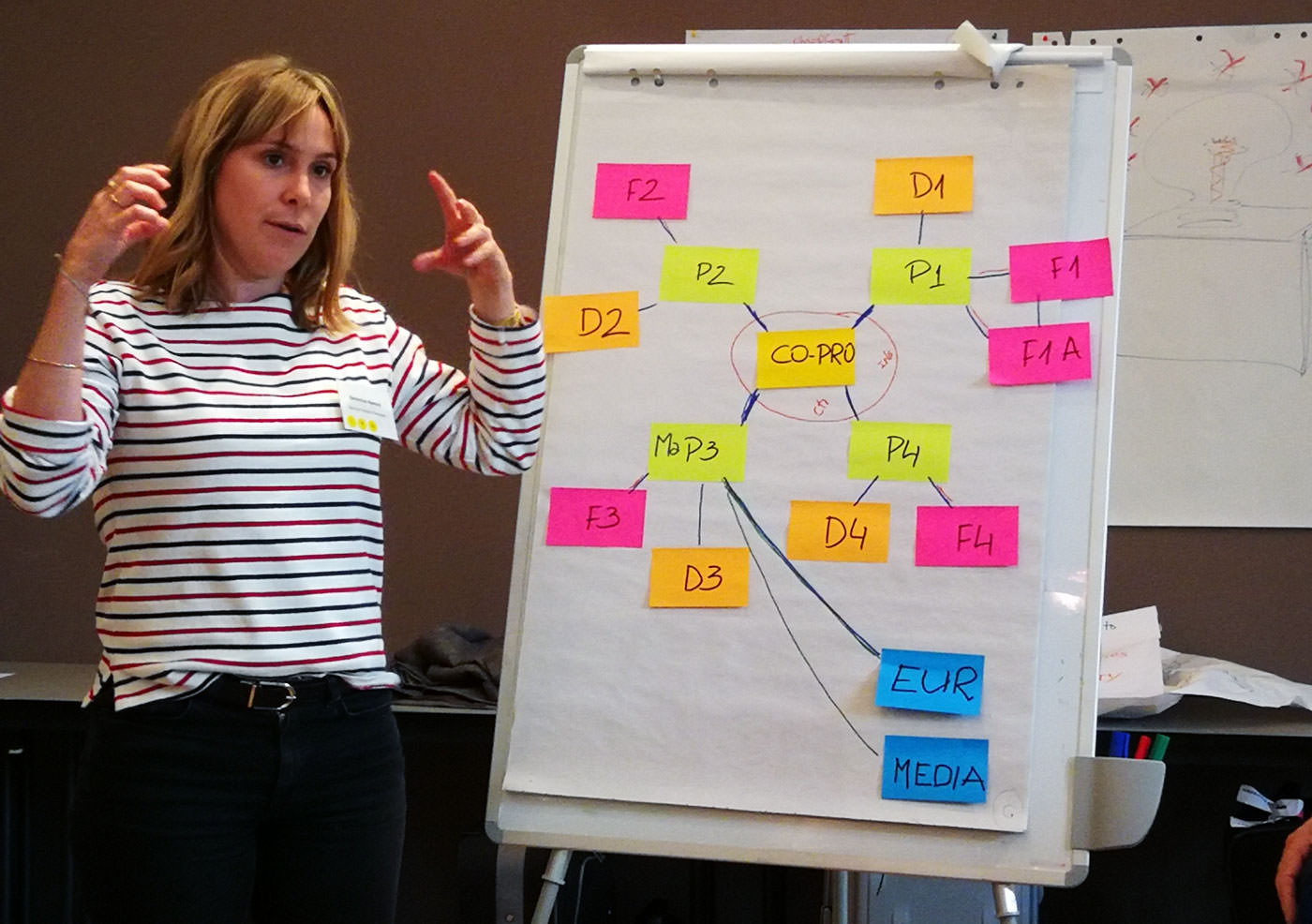Reports Previous Workshops
Eighth Workshop – 26 to 28 September 2018, Royaumont Abbey, France
Module 4b – Digitizing the Funding Process
Introduction
Most of the public film funds have been very busy digitizing their funding application forms. They put the forms online and producers need to fill in and submit them in the digital format. The applications are saved in the file system or, sometimes, in the database system. However, there should be also a digital representation of the agreements made between two parties such as two film funds, a producer and a fund, two producers in the context of international co-productions, etc. Certain relationships need to be re-negotiated or re-defined, which is something the current system is still not really supporting.
- How can the funds redefine the parties and the kind of relationship between them?
- How can the funds synchronize some of their activities and processes?
- Is there something that cannot be synchronized?
Group Exercise
The MEDICI participants, divided into groups, were asked to design a blockchain flowchart for the cooperation among the film funds represented within every group. Each group needed to:
- take into consideration contracts done for production, financing and/or distribution.
- make notes of the critical issues brought up during discussion.
The outcome of the group exercise
Group 1:
Characteristics of the proposed blockchain flowchart:
- Due to the fact that there are partners from different countries, you have to take care about the structures in each country (different territorialization requirements of national and regional funds, recoupment requirements, etc.)
- TV broadcasters from each country should also be involved
- Out of the five participating partners, one is designated as the majority partner. We assume that the majority partner has a contract with the distributor
- Distributor needs to have many smart contracts
- Each country has the funding contracts with national producers. All the requirements such as regional effects, or requirements regarding revenues and recoupment should be stipulated in those contracts.
- In our blockchain there would be no further need for collecting agents. If you define this in the co-production contract to which you also attach a revenue plan that stipulates all the recoupment waterfalls, the money can be transferred directly to the national producers who shall then forward parts of the revenues to the funding institutions if there are recoupment requirements.
- Our blockchain would also work for assets, not only for transactions. Those assets can include rough-cuts, photographs, performance on different platforms, information on crew and cast, labor conditions, comparisons of incomes, ceilings on income vis-à-vis the production budget, etc.
Critical point: Distributor needs to have more smart contracts at the same time.

Group 2:
Characteristics of the proposed blockchain flowchart:
- Our blockchain would consist of two sets of protocols: 1) The first protocol is the co-founders’ protocol and it sets up the rules and the relationship between co-founders. That is where we share financing plans, recoupment plans, credits and all the issues that concern co-founders. 2) The second protocol is the co-production agreement between all of the producers. They are set to work together on the ownership they will have over film, copyrights, hiring crew and the cast, etc.
- Then we have a bank account that sits within the blockchain where all of the funding from co-founders is collected and then re-distributed from there. Everybody has the right to insight into this account.
- We would also establish milestones within the blockchain. This also goes back to the co-founders’ protocol. Once the milestones are achieved, all of the funding starts to come down into the release of funds.
- Within this blockchain we can see all bank accounts, all of the expenditures and reports. Sitting within the blockchain, we can also see all of the cuts of the film, all of the daily rushes, etc.
- Everybody should have access to the metadata that sits within the blockchain.
- Once we get to the point that the film is finished, the final metadata will also sit within the blockchain. Therefore, all of the distributors and broadcasters or online platforms would have access to this metadata. Through the access to the metadata, all of the distributing partners will be able to feed data back to the funders and the producers.
Critical point:
- The biggest conflict would be in setting up the first two protocols because that is when all the rules need to be set up.
- Who is generating the metadata and preparing the documents? It cannot be automatic?
- Metadata is an aggregation of annotations. Metadata is not the film itself, but the data about the film.

Group 3:
Characteristics of the proposed blockchain flowchart:
- The starting point is the project – the co-production agreement.
- Producers come to funders with the co-production agreement. Each producer would have to apply to his/her own fund, but the producers’ contracts with the funds should be available to the certain number of people (other funders, co-producers, etc.).
- In addition to public funding, producers would also have links with the market players (broadcasters, distributors, etc.). Those financing sources should be accessible to all producers and funders, but they should not be accessible to the competitors (other national distributors and broadcasters that have their share in the domestic territory), which is the main difficulty.
- Sales agent would sell the film to non-domestic territories. Sales agents have the link (contract) to the delegate producers, but the related information should be accessible to all the funders.
- We would keep the collecting agent who would have a contract with everyone involved they are responsible for. The collecting agent should check the validity of the financing information presented by the producers.
Critical point:
- To understand the hidden network behind the one presented in the blockchain.
- To understand who should access what.
- Designing the blockchain at some point necessitates inclusion of an additional dimension, which is a challenge.

Group 4:
Characteristics of the proposed blockchain flowchart:
- The stakeholders would be constellated in concentric circles. The film (co-production) is in the middle and it centralizes the whole process.
- Producers have the co-production agreements between themselves but also different agreements with public film funds, market players, etc.
- The information would go to one center and pieces of information would be released from that center to the party requesting it. For example, if the Icelandic film fund needs to see certain contracts from co-producing countries, they can get it from the centralized system.
- There would be different keys providing access to this system.
Critical point: Some players would be able to see certain information, whereas some others would be denied the rights to receive that information. So how to regulate this restricted and selective access?

Group 5:
Characteristics of the proposed blockchain flowchart:
- Our blockchain would apply only to the certification process of official co-productions and it would be designed to speed-up this process.
- Countries would access the certification files, exchange information and provide together provisional and definitive certificates. The certificates then could be used for Eurimages, distributors, regional film funds, etc.
- The system can be used for the official co-productions triggered by both bilateral treaties and the European Convention.
- The relationship between the funds and countries would be in the center, not the co-production itself.
Critical point:
- The national governments will never agree to decentralize the data and allow the access to non-national partners. It would require a completely new policy whose implementation would take a lot of time, maybe more than a decade.
- The additional challenge is the existence of different national IT legislations across Europe. The IT legislators must be included in any blockchain discussion.

Cooperation between public funds in an increasingly complex and international environment: opportunities, actions, ideas
- Introduction
- Module 1a – Panel: Co-operation between funds means mainly supporting co-production
- Module 1b – Are there possible alternatives?
- Module 2 – How to access smart data to better reach the audience?
- Module 3 – How could funds help each other to make the projects they co-finance visible?
- Module 4a – How to simplify and make life easier for funds and producers in terms of paperwork.
- Module 4b – Digitizing the Funding Process
- Module 5 – How to assess the performance of funding programs dedicated to international co-operation?
Illustrations by KAK
Schedules Previous Workshops Partners Contact